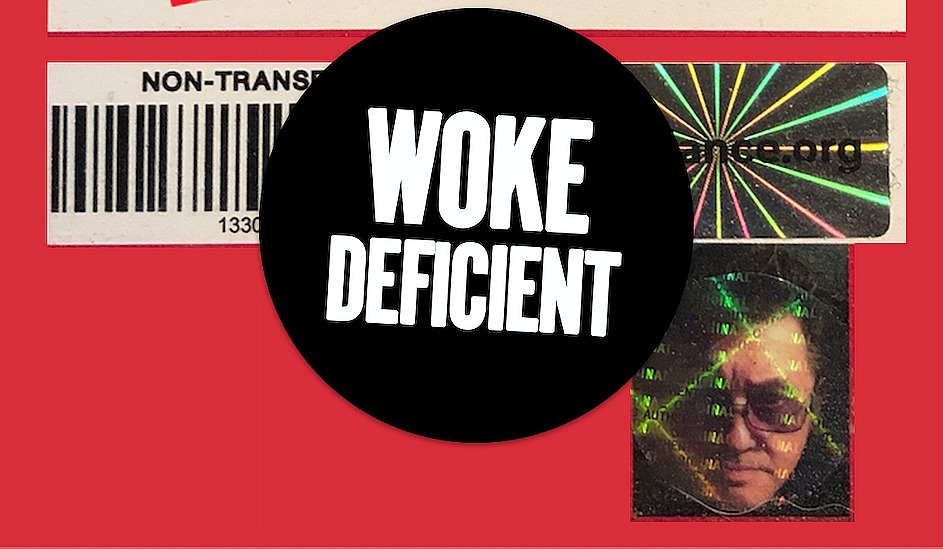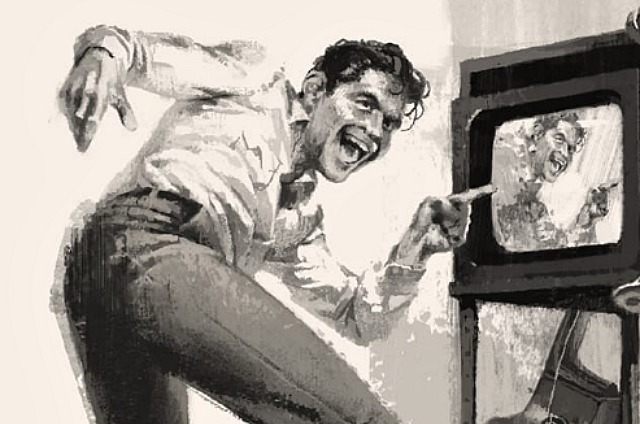Running With Beto, a doc about Beto O’Rourke‘s unsuccessful but profile-enhancing race against Ted Cruz for a U.S. Senate seat, will debut at the 2019 South by Southwest festival (3.8 — 3.17). Director David Modigliani (Crawford) had exclusive close-up access with O’Rourke from start to finish. Obviously the doc, which will almost certainly be programmed at other festivals before going to streaming, will serve as a reputation burnisher for O’Rourke’s 2020 presidential campaign. (The El Paso-based politician will probably launch his candidacy within the next two or three months.) I’m not saying O’Rourke will definitely attend the SXSW screening, but it’ll look pretty weird if he doesn’t.
Daily
Why “Roma” is A Slam Dunker
Green Book and Bohemian Rhapsody are no longer just Best Picture contenders with soiled reputations and checkered histories. They are now, in the view of Vulture‘s Nate Jones, “Oscar villains.” Villains, mind you. Which means…what, up to no good, bad karma, twirly moustache movies who tie fair young maidens to the train tracks, and sure to be foiled by the hero?
What exactly is a movie villain as defined by the last eight or nine years? It’s a film that “usually debuts at one of the fall festivals, where it earns rave reviews from the mostly white commentariat,” Jones explains. “It gets good buzz throughout the fall, and debuts to largely positive reception, but also some side-eyes on social media over its racial or sexual politics.
“These rumblings are often crystallized in a widely shared piece of criticism, after which viewers are forced to divide themselves into three camps: those who take pride in dunking on the film, those who defend it from the legions of haters, and those in the middle who consider it, at best, a problematic fave.
“Awards prognosticators write stories about how this negative buzz is not having an impact on voters, a point seemingly proven when the movie performs well at the Golden Globes. The Globes success in turn ramps up the backlash, but the film seems to be skating toward Oscar success until — sometimes at the last possible moment — it loses Best Picture to a less-controversial competitor.”
That “less controversial competitor,” trust me, is Roma. Alfonso Cuaron‘s memory film has no marks against it, and serves as a stirring metaphor for Trump pushback against the wall and general yokel-hinterland racism. Plus the Golden Globe and Critics Choice wins have already supplied a strong headwind.
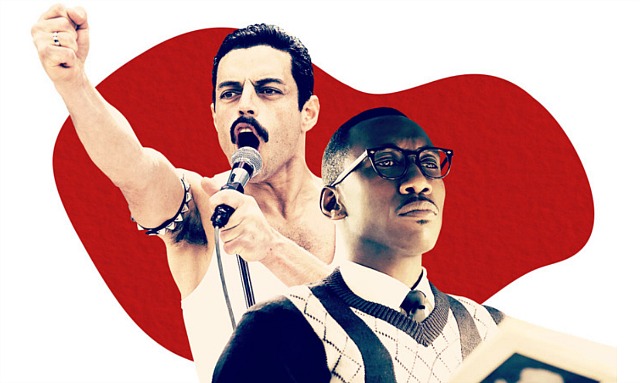
Poor Mark Robson
What sane person in the year 2019 would want to watch The Prize, a piece of slick, cheesy, pseudo-swanky escapism with a James Bond-ian flourish?
Paul Newman starred as an alcoholic Nobel Prize winner in Stockholm, sipping a string of martinis as he puts the moves on Elke Sommer, and as they both get caught up in a Foreign Correspondent-type kidnapping caper. Empty, synthetic crap from start to finish.
And what about director Mark Robson? Talk about a tragic fall from grace.
A fledgling director-editor who was mentored in the 1940s by Val Lewton and Robert Wise, Robson hit his stride in 1949 when he directed the rough and gritty Champion and Home of the Brave, for producer Stanley Kramer.
Robson probably peaked with his direction of The Bridges of Toko-Ri (’54), a highly respected Korean War film with William Holden, as well as The Harder They Fall, a Budd Schulberg prize-fighter drama with Humphrey Bogart.
Robson then fell into a kind of soap-opera groove with Peyton Place (’57), The Inn of the Sixth Happiness (’58) and From The Terrace (’60). Then came the mildly approvable, moderately mediocre Lisa and Nine Hours To Rama (’63).
Later that year Robson fell off a cliff with The Prize. Then came the no-great-shakes Von Ryan’s Express (’65), a WWII actioner with Frank Sinatra.
In ’67 Robson was back in the soap opera ditch with Valley of the Dolls…good God. After that he made nothing but shit, shit, shit — Daddy’s Gone A-Hunting (’69), Happy Birthday, Wanda June (’71), Limbo (’72), Earthquake (’74). The poor guy died of a heart attack in ’78 at age 64.
Hoe do you go from Champion and The Bridges at Toko-Ri to Valley of the the Dolls and Daddy’s Gone A-Hunting…that’s what I want to know.
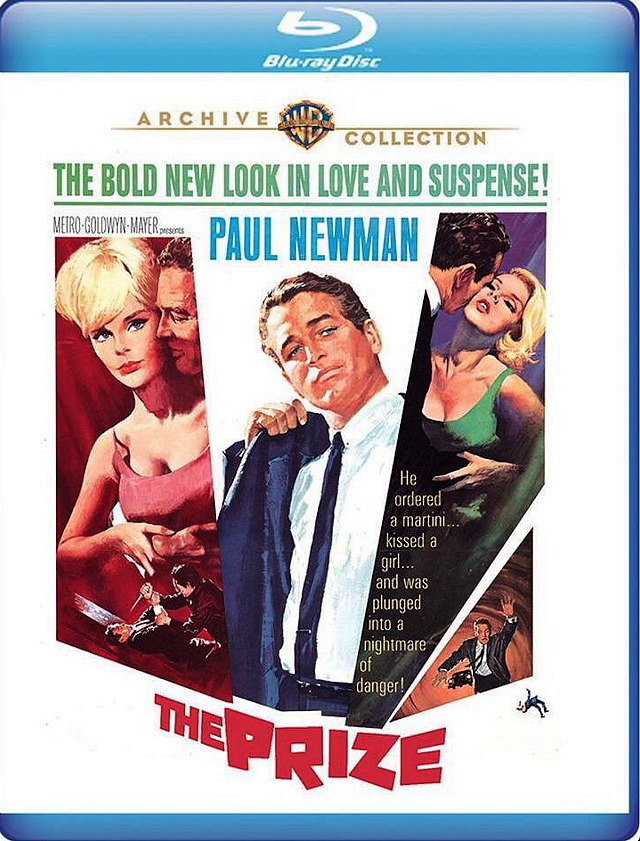
“Nice Daydream. Then What?”
The above headline is from a significant 1940s film. Ahh, what the hell.

Let Me Get This Straight
There are concerns among Puerto Rican artists and activists about Steven Spielberg and Tony Kushner‘s forthcoming remake of West Side Story. Chief among these is that the 1950s period musical (a) might not feel culturally authentic enough in its portrayal of Puerto Rican immigrants in Eisenhower-era Manhattan and (b) that it might present an offensively negative portrait of Puerto Rico.
The beloved Stephen Sondheim-Arthur Laurents-Leonard Bernstein musical conveys negative views of Puerto Rico in “America”, an ensemble tune that is chiefly sung by Bernardo’s sexy g.f. Anita (respectively played by Chita Rivera and Rita Moreno in the 1957 stage and 1961 film version). The sassy lyrics weigh the pros and cons of life in New York City vs. San Juan.
But in all fairness one also has to apply basic logic in this matter. Why did Puerto Ricans immigrate to America if things weren’t a tiny bit problematic in their native country in the first place? Spielberg’s film can present a culturally sensitive, politically correct view of Puerto Rico, fine — but why resuscitate West Side Story at all if you’re worried about dated views and impressions that are built into the narrative? Why re-tell a story of racial prejudice that is grounded in the fact that Puerto Ricans left their native land, presumably for pressing reasons?
Answer: Spielberg, the 800-pound gorilla in the room, wants to remake West Side Story because he wants to remake West Side Story. Because he was stirred in his mid teens by the Robert Wise-directed Oscar winner. Because he wants to stretch himself creatively, having never directed a musical. And because he feels he can update the show in a way that will not only revitalize the material but feel “correct” to the cultural commissars.
The Hollywood Reporter‘s Seth Abramovitch reported yesterday that these issues were discussed in a secret mid-December meeting on the San Juan campus of the University of Puerto Rico.
The small gathering was mostly composed of university students and faculty, but a San Juan film critic, Mario Alegre, also attended.
“Why West Side Story? And why now?” Alegre says to Abramovitch. “That was my first reaction. It’s a very sensitive film for Puerto Ricans because of their portrayal in it. It’s like doing Breakfast at Tiffany’s.”
“He Couldn’t Borrow Money From Anyone Else…”
“So he got it from the Russians. Cut to the hookers in the hotel. That’s what this whole thing is about. He’s in to them.”
Also: “That’s how all dictators do it. They have to destroy truth first. Because if people knew what was going on, then obviously they would be upset. But they don’t, and they especially don’t hear it inside the Fox News bubble. They believe him more than they believe what they read in the N.Y. Times, because they don’t read the N.Y. Times. So you’re left with this situation in which there is no truth, where you’re just going to pick sides, and that’s what we have. Forget about getting anything done in the country. We’re just fighting for our life now, as a country.”
Played The Redford Card…Zip
Robert Redford sorta knows me from way back. Not as any kind of acquaintance or favored journalist pally, but as a guy who’s been in the game since the early ’80s, and as one of the Oscar handicappers who totally fell for his solo performance in J.C. Chandor‘s All Is Lost.
I realize that Redford is more or less in a retirement mode these days and is only slightly involved in the Sundance Film Festival, if that, but I figured it couldn’t hurt to tell him of my Sundance troubles. So I sent along the following email on 1.3.19. No response so far, and that’s okay. At least I gave it a shot.
DATE: 1.3.19
TO: Robert Redford c/o Sundance Film Festival
FROM: Jeffrey Wells, Hollywood Elsewhere
RE: Sundance ’19 press pass
Bob,
This is way below your station and pay grade, but please take a couple of minutes and read this over.
After covering Sundance with a press pass for 25 years (since ’94) I’ve had my press accreditation for the 2019 festival denied by the Sundance powers-that-be. I’ll be attending anyway and catching films by the good graces of publicist pals, but it’s my presumption that my pass has been deep-sixed because I’m regarded as insufficiently “woke” in my general attitude as a film critic and columnist.
I’ve been told that it was a matter of making room for new journalists and that the number of press passes are finite, etc., but nobody believes that. My guess is that it more or less boils down to a high-school-level thing — the cool kids don’t like me any more and I’ve been elbowed out of the “in” crowd. Another way of looking at it is that I’ve been politically blacklisted.
Last year I conveyed a critical impression about the festival that may have riled a couple of people. I wrote that the festival has largely become a politically instructive experience as opposed to a festival about general cinematic excitement and stimulation. I said that Sundance ’18 felt to me like “a socialist summer camp in the snow.”
Free Man In The Morning
Everyone laughed or sneered when Donald Trump announced his candidacy three and a half years ago. But when it became clear a few months later that he was connecting with the rural none-too-brights, people started to compare Trump to Lonesome Rhodes in A Face in The Crowd, the 1957 drama about the rise and fall of a country-boy demagogue and sociopath, played by Andy Griffith.
Trump is anything but “country,” of course, but he’s just as much of a media-attention whore and a bullshit artist as Rhodes became by Act Three of Budd Schulberg‘s script.
It could be argued that the fictitious Rhodes was a much savvier guy than Trump could ever hope to be, and that Trump is more of an unregenerate liar and a stone sociopath. And yet here we are in January ’19, and just like that woman at the end of Kazan’s film who says “why, he’s a monster!”, a fair-sized portion of the chumps who voted for Trump are scratching their heads and wondering why they fell for his act while pundits everywhere long ago agreed that Trump was Rhodes and vice versa. The analogy was undeniable in early to mid ’16, but now it’s a so-whatter.
In short Criterion waited way too long to release their 4K Bluray (due on 4.23.19). They should have released it right after Trump’s election.
On top of which I’m disappointed that they’ve chosen to present it at 1.85, which means they’ve sliced off the top (or bottom) of the 1.78:1 image that was delivered on the 2005 DVD version. But that’s what they do. Just as Marc Bolan loved to boogie, Criterion likes to cleaver.
Harry Stradling‘s needle-sharp, well-framed, occasionally atmospheric cinematography (he also shot Kazan’s A Streetcar Named Desire) has always looked great in previous formats; A Face In The Crowd should look extra snappy in 4K.
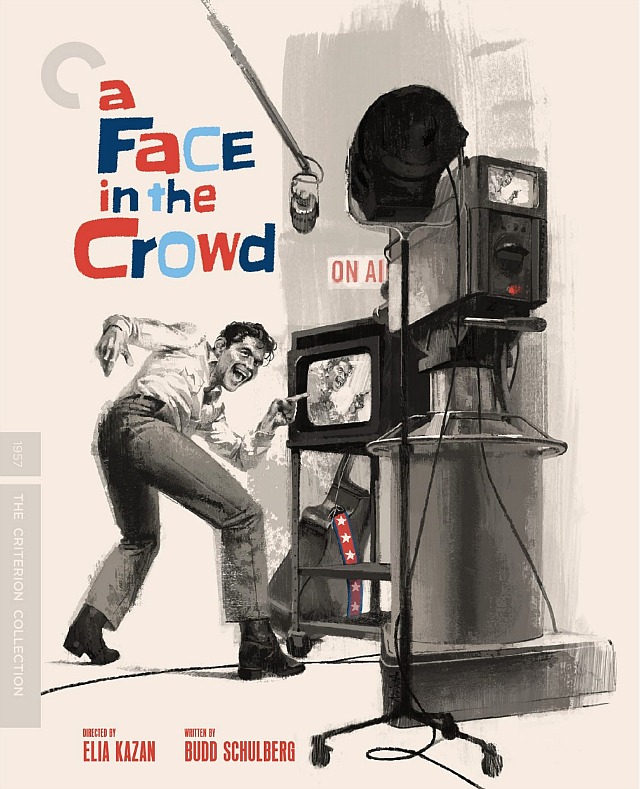
Spider-Man’s European Vacation
Sending a superhero to Europe to liven things up is, needless to point out, a sure sign of franchise fatigue. Imagine being so low on the aesthetic-genetic totem pole that you could watch this thing and say to yourself “Wow…I’m there come July!” I’ve no problem with Jake Gyllenhaal taking a paycheck role, but will Samuel L. Jackson‘s Nick Fury tell Tom Holland‘s Peter Parker that he has “no idea” what he’s up against? The idea of Hydron, lord of the waters, wreaking CG havoc in poor Venice, Italy…to paraphrase Frank Gorshin‘s version of Kirk Douglas, the very idea makes me sick to my stomach.
Better Male Behavior — Feminized, Non-Toxic, Post-#MeToo
Just as “white male” has become a total epithet, the word “male” is also fraught with negative connotations. Obviously with ample justification when it comes to workplace sexism. Hence this Gillette ad, obviously made with an assumption that guys have a lot of bad stuff to make up for, and that now is the time to man up and fix that shit.
I feel two ways about this ad. On one hand it seems reasonable enough — I’ve always hated belligerent, beered-up machismo — but on another level primal male energy (conquest, courage, brawn, a willingness to fight battles and do dirty work) has always played an essential role in societies throughout history, and you don’t want to throw out the baby with the bathwater.
We’re obviously in a de-balling phase now (certainly in urban circles) and a concurrent rise in feminist power and influence. Outside of unfortunate social side-effects like the withdrawal of Hollywood Elsewhere’s press pass at the newly feminized Sundance Film Festival, this is probably for the best. These things happen in cycles. Then again…aahh, I don’t know what to think.
Consider the following Camille Paglia statement in a 2017 Vice interview: “One of my persistent quarrels with second-wave feminism is how male-bashing became its default mode from the start. Men have every right to determine their own identities, interests, and passions without intrusive surveillance and censorship by women with their own political agenda. [They] should be free to carry on and carouse there and say whatever the hell they want to each other, without snoops outside the door ready to report them to the totalitarian sexual harassment office.”
Paglia is the author of “Free Women, Free Men: Sex, Gender, and Feminism.”
When I Look at William Barr…
When I look at William Barr, I see a chimpanzee version of the guy…orange hair, muttonchops, mustard Mao tunic…sitting next to Maurice Evans‘ Dr. Zaius in the original Planet Of The Apes. Because, frankly, Barr has a monkey mouth…a monkey mouth flanked by a jowly bulldog face. I hear intelligence and a semi-reasonable attitude, but his physicality suggests complacency and opportunism. The face that you have after age 40 is your own.
Why did Trump nominate Barr to succeed Jeff Sessions? Because he’s Mr. Integrity? Please.
YouTube comment #1: “I want to trust Barr but something tells me he’s a serpent under an innocent flower.” YouTube comment #2: “Hates exercise.” YouTube comment #3: “This guy’s smart enough to protect Trump in a number of ways without actually firing Mueller. He’s left his options wide open. I don’t trust him one bit.” YouTube comment #4: “Saying Russia ‘attempted’ to interfere in the election is bullshit…they did interfere.” YouTube comment #5: “Just another rich old man looking out for his best interests.”
Channing, And I Don’t Mean Tatum
The legendary Carol Channing made it to age 97 — no sadness or tragedy in that. She was a Broadway star, of course (she costarred in one semi-significant movie — 1967’s Thoroughly Modern Millie), and hugely popular among stage mavens. But Channing was relatively unknown to movie and even TV audiences for the most part. To them Marilyn Monroe was and always will be Lorelei Lee in Gentlemen Prefer Blondes, and Barbra Streisand was and always will be the star of Hello, Dolly. And to me, Channing was always the pizazzy but somewhat older performer who always played younger than her years. Channing’s Lorelei was launched in the 1949 B’way production of Gentlemen Prefer Blondes, when she was 28 or thereabouts. But her biggest role, that of Dolly Gallagher Levi in Hello, Dolly!, which opened on Broadway in 1964, happened when she was 43. Those eyes, those saucer eyes. And that gleaming smile.

